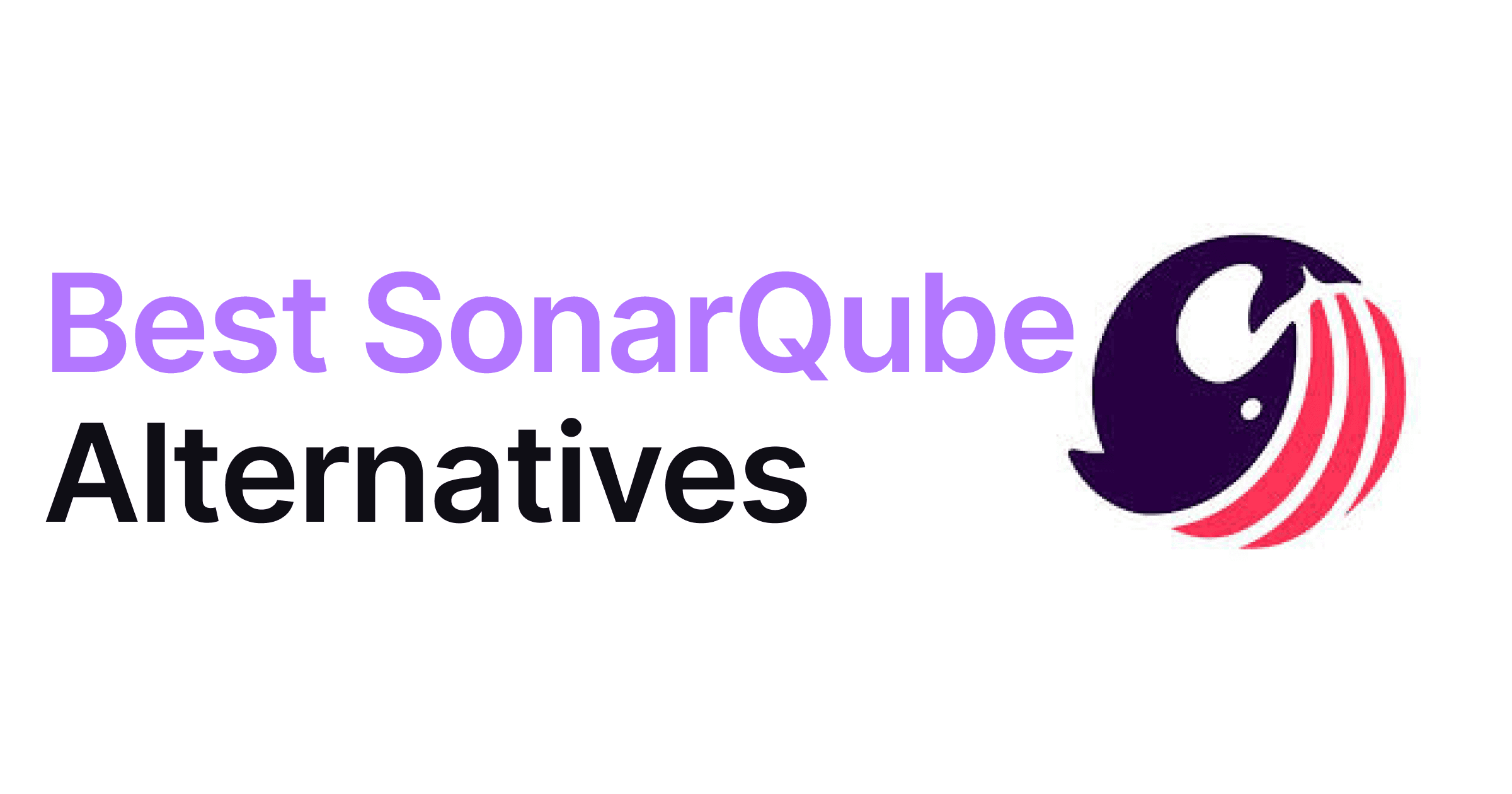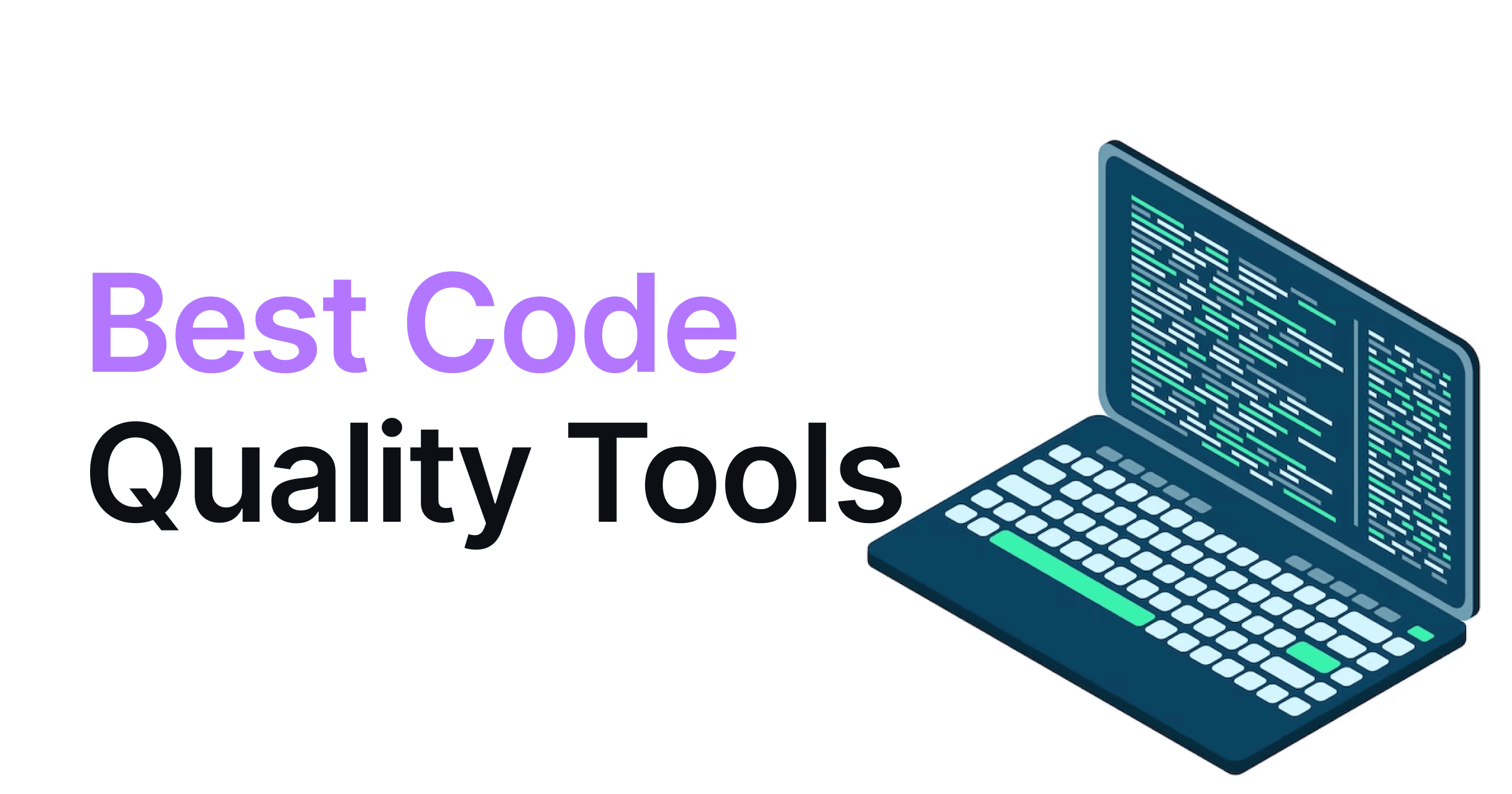AI Code Review
Code Review Tools
Amartya Jha
• 07 February 2025
Code reviews are a pain, right? Let’s be real—going through pull requests, catching bugs, and making sure your code doesn’t break production is not the most exciting part of a dev’s life. That’s where AI-powered code review tools like CodeRabbit AI come in, making the process faster and (hopefully) less painful.
But maybe CodeRabbit isn’t cutting it for you. Maybe it’s missing features, too pricey, or just not the right fit. No worries—we’ve got 9 solid alternatives that might be exactly what you’re looking for.
We’re not just throwing a list at you—we’ll break down the good, the bad, and who each tool is best for, so you can actually pick the right one instead of searching all over the internet.
Let’s dive in. 🚀
1. CodeAnt.ai
CodeAnt.ai is built to automatically scan your code, catch bugs and security issues, and deliver clear, actionable reviews—so you can spend less time troubleshooting and more time coding.
What It Does Best:
Quick Issue Detection: CodeAnt.ai works like a diligent team member that never sleeps. It runs real-time scans of your code, catching bugs and vulnerabilities.
Seamless Integrations: Code in VS Code, JetBrains, or another popular IDE, or integrate your workflows with CI/CD pipelines, CodeAnt.ai fits right in.
Actionable Summaries: After analyzing your pull requests, it provides crisp summaries and highlights what needs fixing. This saves you hours in manual reviews and helps keep the whole team on the same page.
Best For: Ideal for development teams and startups of all size, that need comprehensive code review and security automation.
Pricing -> 14 Day Free trial and then $10/user/month
Try Now → https://www.codeant.ai/
2. Qodo AI’s PR-Agent
Qodo AI’s PR-Agent provides automated, clear, and customizable feedback on pull requests across popular platforms. It is helping you fine-tune your code without the hassle of endless manual reviews.
What It Does Best:
Automated Feedback: Think of it as your friendly, ever-ready code buddy. Qodo AI’s PR-Agent reviews your pull requests and gives you instant, actionable feedback.
Flexibility & Customization: Since it’s open source, you can host it yourself and tweak it to fit exactly how you work. Whether you’re tweaking the rules or integrating it with your internal systems, this tool grows with your needs.
Multi-Platform Support: No matter if your team is spread across GitHub, GitLab, Bitbucket, or Azure DevOps, this tool works consistently across all platforms, keeping everyone in sync.
Where It Falls Short:
Setup Complexity: For those not used to self-hosting tools, getting it up and running might take some extra time and technical know-how. It’s not exactly “plug and play” if you’re not comfortable with a bit of configuration.
Limited Security Focus: While it excels at providing structure and style feedback for your code, it isn’t designed to dive deep into security analysis.
Best For: Great for agile teams and open‑source projects that value flexible, automated PR reviews.
Pricing -> Free if self‑hosted
Try Now -> https://github.com/qodo-ai/pr-agent
Must Read: Free alternatives to SonarQube.
3. CodeFactor
CodeFactor constantly monitors your codebase for quality issues, flagging everything from duplicate code to complexity problems so you know exactly where to focus your fixes.
What It Does Best:
Continuous Monitoring: It regularly scans your repositories to flag issues like duplicate code, unnecessary complexity, and other quality problems before they pile up.
Prioritizes Fixes: It doesn’t just list problems; it ranks them by severity. This means you can zero in on the most critical issues first.
Easy Workflow Integration: CodeFactor.ai ties right into your GitHub or Bitbucket pull requests and even integrates with Slack for instant alerts. This integration keeps your workflow smooth without forcing you to learn a new system.
Where It Falls Short:
Not Deeply AI-Driven: While it does an excellent job at tracking code quality, it doesn’t provide the advanced AI insights that some of the newer code review tools have. It’s more about monitoring than actively suggesting innovative fixes.
Limited Security Insights: If you’re looking for a tool to deeply analyze and secure your code against potential breaches, you might find its security features a bit basic.
Best For: Perfect for small to mid‑sized teams that want an unobtrusive way to monitor and improve overall code quality.
Pricing -> Free plan for public repositories. Paid plans start at $27 per month + 14 Days free trial.
Try Now -> https://www.codefactor.io/
4. CoderBuds.com
CoderBuds auto-adds helpful, inline review comments and even scores your pull requests.
What It Does Best:
Automated Inline Feedback: It automatically posts clear, actionable review comments directly on your PRs, saving you time and keeping reviews consistent.
Team Collaboration: Offers team reporting and integrates with Slack and GitHub, making it easy for teams to stay in sync.
User-Friendly Tone: The feedback feels human and conversational, making the review process less intimidating.
Where It Falls Short:
PR Size Limitations: It works best on smaller PRs; larger changes might overwhelm its processing limits.
Platform Focus: Currently optimized mainly for GitHub, so users on other platforms might miss out on its full potential.
Best For:
Teams looking for a quick, human‑sounding way to improve pull requests and track code quality.
Pricing: $20/month/repo
Try Now: https://coderbuds.com/
5. Code Reviewer — Callstack.ai
Callstack’s Code Reviewer leverages a state‑of‑the‑art engine to analyze code changes, generate detailed PR summaries, and suggest fixes.
What It Does Best:
In‑Depth Analysis: Uses advanced code understanding to map relationships and pinpoint issues. So issues are detected in the early stage.
Actionable Suggestions: It not only identifies issues but also suggests ready‑to‑commit fixes, so you know exactly what needs to be done.
Privacy & Pipeline Integration: Runs in your CI/CD pipeline with full privacy mode, ideal for secure, automated reviews.
Where It Falls Short:
Learning Curve: Its detailed analysis may be overwhelming for smaller teams or those new to automated reviews.
Resource Intensive: May require some fine‑tuning to integrate seamlessly into highly customized workflows.
Best For: Suited for larger development teams and enterprises that need robust, security‑focused reviews to lower production risk and boost merge speed.
Pricing: Free for Personal and Open Source Projects. Team Plans starting from $285/month with AI Features.
Try Now: https://callstack.ai/code-reviewer
6. SquireAI
Squire AI automatically reviews your code and writes concise PR summaries in under a minute—so you can focus on shipping high‑quality code faster.
What It Does Best:
Lightning‑Fast Reviews: Delivers code reviews almost instantly, helping teams iterate quickly without waiting on lengthy analyses.
Rule Enforcement: Once you set your team’s coding rules, Squire AI ensures consistency across your entire codebase automatically.
Interactive Support: Its chat-like interface lets you ask questions or discuss review details, making it feel like a real teammate.
Where It Falls Short:
Limited Customization: May not offer as many configuration options as more mature tools, so it might feel a bit “preset” for some teams.
Niche Fit: Best suited for fast‑paced environments; teams needing granular, in‑depth feedback might require additional tools.
Best For: Ideal for fast‑paced startups and small-to‑medium teams that prioritize speed and consistency in code reviews without getting bogged down in lengthy processes.
Pricing: Paid plans starting from $20/user/month and custom pricing if your team is larger than 100+ developers.
Try Now: https://www.squire.ai/
7. Graphite.dev
Graphite.dev is an all‑in‑one pull request toolchain that lets you stack, split, and manage PRs efficiently while keeping your code review process clear and unified.
What It Does Best:
Unified PR Workflow: Provides a single inbox for all pull requests, helping you manage reviews, suggestions, and notifications from one place.
PR Stacking & Splitting: Enables you to stack related PRs and automatically split large changes, so you always have bite‑sized, manageable reviews.
Developer Insights: Offers handy metrics and integrations (with CLI and VS Code extensions) that keep your development process smooth and transparent.
Where It Falls Short:
Platform Dependency: Primarily built for GitHub, so teams using other version control systems might not experience full functionality.
Feature Overload: With so many features, it may take a bit of time to learn how to fully utilize its potential.
Best For: Best for GitHub-centric teams and growing startups that want to streamline their PR management and gain actionable developer insights.
Pricing: Free for personal and small teams. Paid plan starting from $25/user/month.
Try Now: https://graphite.dev/
8. CodeScene
CodeScene goes beyond traditional SAST Tools by using behavioral metrics to show you which parts of your code need refactoring and where tech debt is building up.
What It Does Best:
Behavioral Analysis: Analyzes code evolution, team dynamics, and complex interdependencies to identify high‑risk areas and refactoring targets.
Actionable Insights: Provides clear, prioritized recommendations that help you tackle technical debt and improve code quality over time.
Flexible Deployment: Available as a cloud service or on‑premise, so it can fit into various enterprise environments without compromising data privacy.
Where It Falls Short:
Complexity: The depth of analysis can be a bit much for small projects or teams not used to data‑driven refactoring decisions.
Learning Curve: Requires some upfront effort to understand and integrate its insights into your development workflow.
Best For: Designed for larger teams and enterprises that need a strategic, data‑driven approach to reduce technical debt and improve long‑term code quality.
Pricing: Paid plans starting from €18/user/month
Try Now: https://codescene.com/
9. What The Diff
What The Diff automatically generates detailed, plain‑English pull request descriptions and changelogs, making code changes clear to both technical and non‑technical stakeholders.
What It Does Best:
Automated PR Descriptions: Transforms code diffs into easy‑to‑understand summaries so everyone stays informed.
Stakeholder Notifications: Creates rich, translated notifications that keep non‑tech team members in the loop.
Beautiful Changelogs & Reports: Generates public changelogs and weekly progress reports with minimal effort.
Where It Falls Short:
Surface-Level Analysis: It focuses on summarizing changes rather than deeply analyzing code quality.
Not for Deep Reviews: Best suited for communication rather than technical debugging.
Best For: Ideal for teams that need to keep non‑technical stakeholders informed.
Pricing: Has free plans, which give you 25000 tokens(approx 10 PRs) and paid plans start at $19/month with 200K tokens and have an unlimited plan for $199/month.
Try Now:https://whatthediff.ai/
Conclusion
We've taken a close look at nine innovative alternatives to CodeRabbit AI—each one designed to help you streamline code reviews, catch bugs, and even keep non‑tech stakeholders informed. We have included tools for each use case, different types of teams and also budget-focused tools.
Next Steps:
Test a Free Trial: Pick one or two tools that match your needs and test them.
Share Your Feedback: Let us know which tool improved your workflow and why.
Stay Updated: Subscribe for the latest tips on AI code review tools and best practices.
Ready to transform your code review process? Get started with CodeAnt.ai today!













